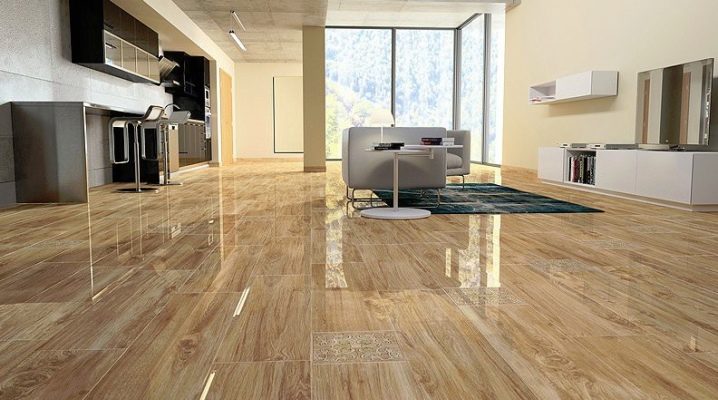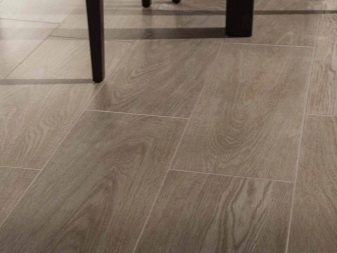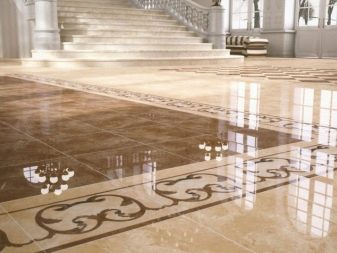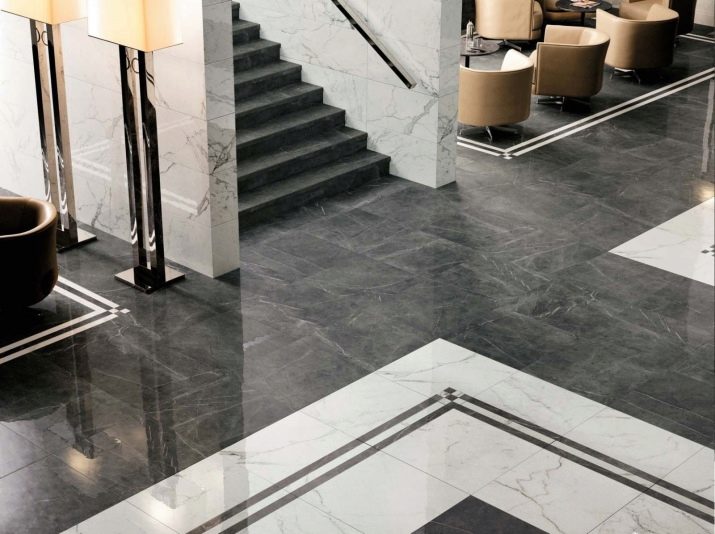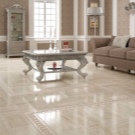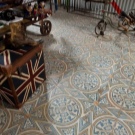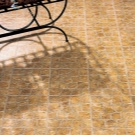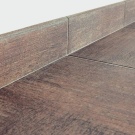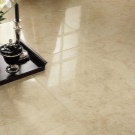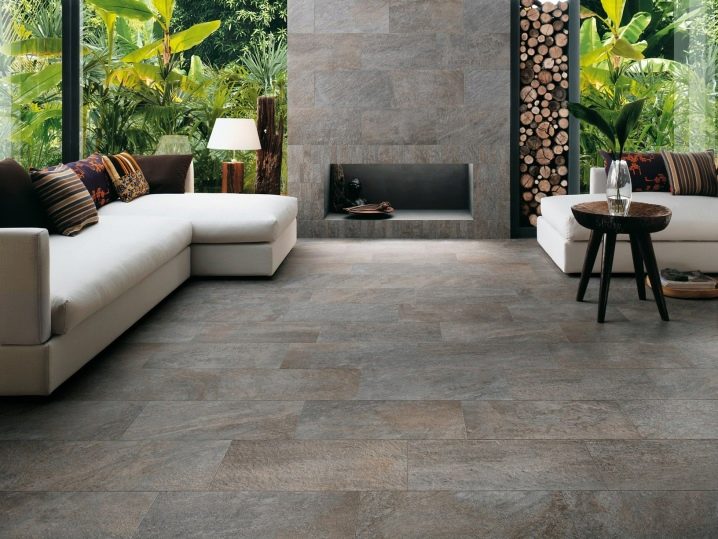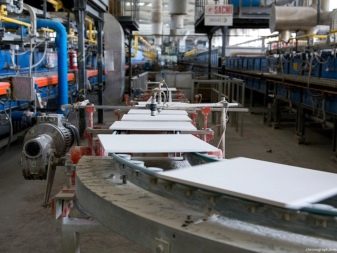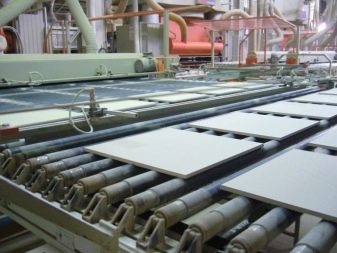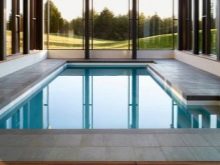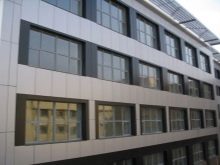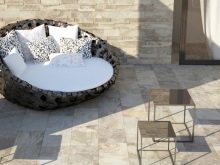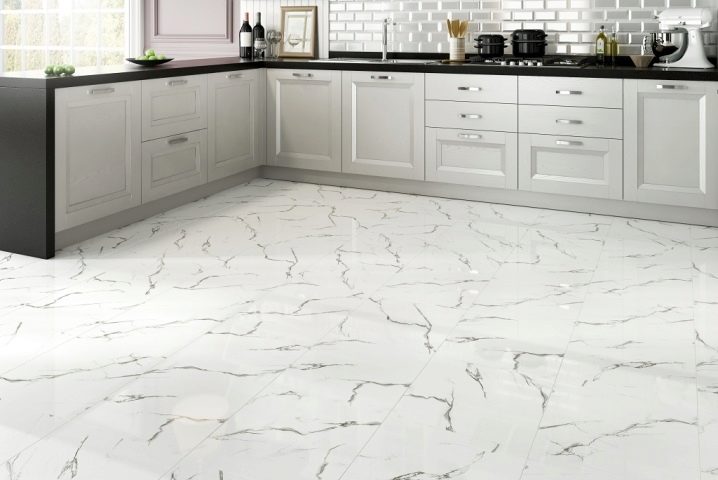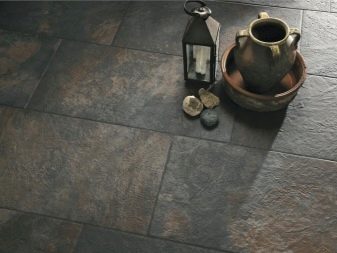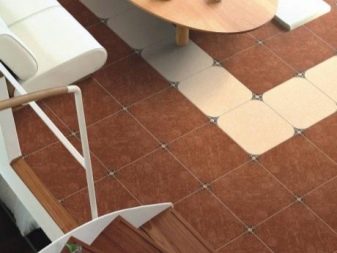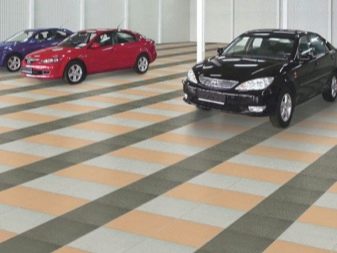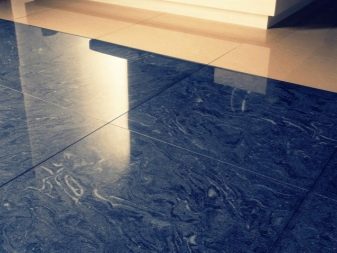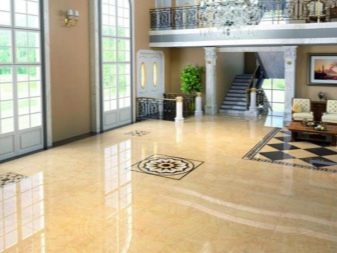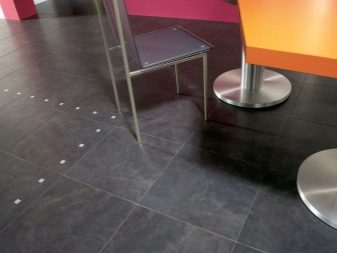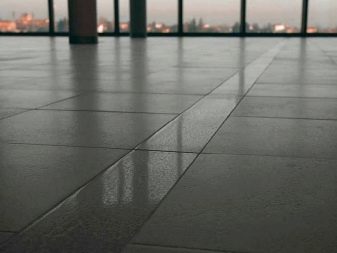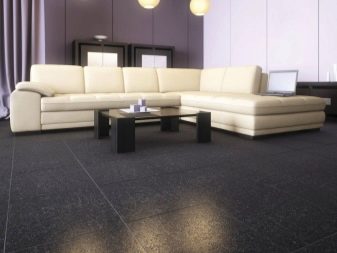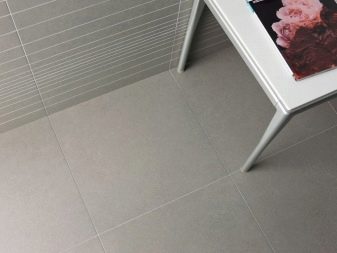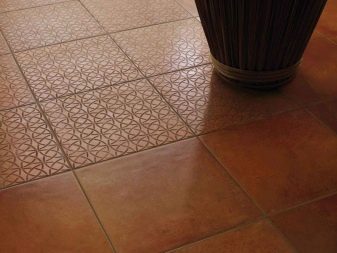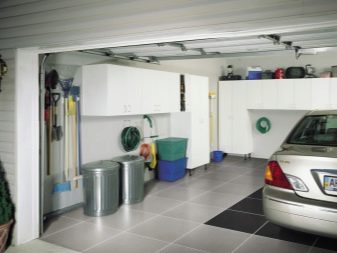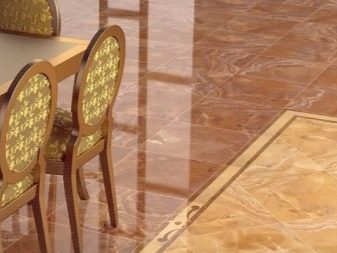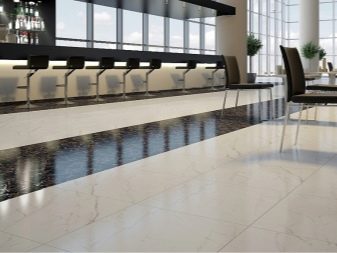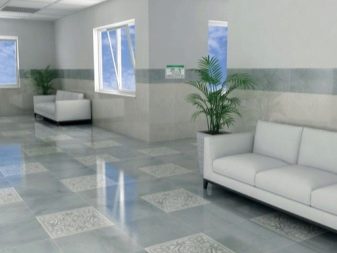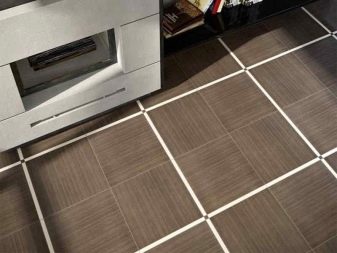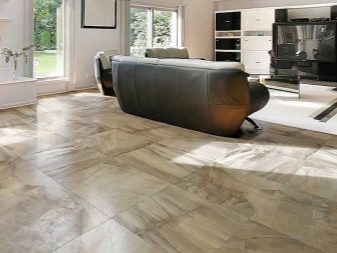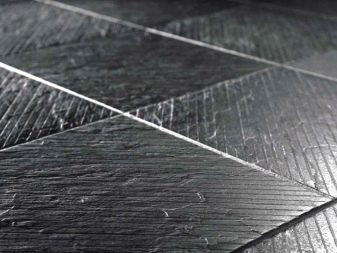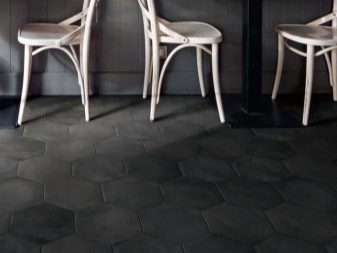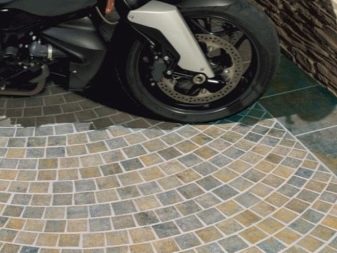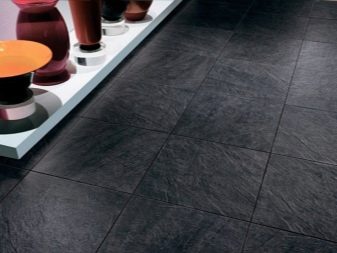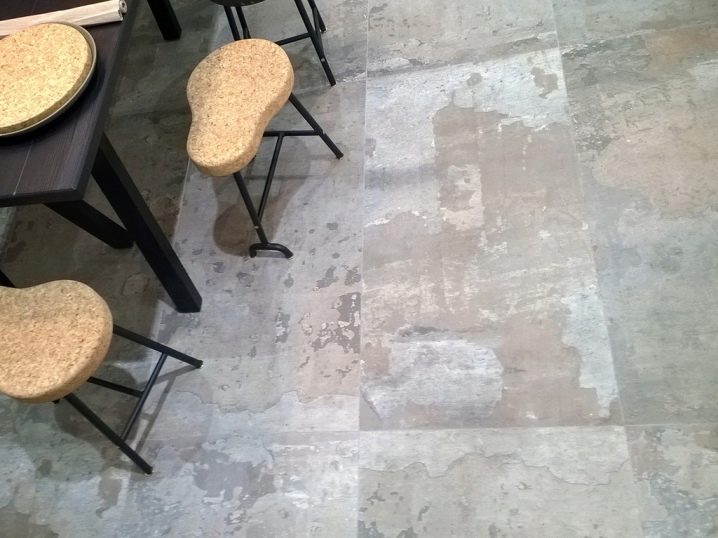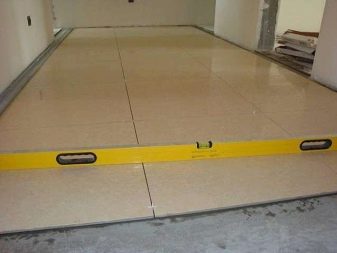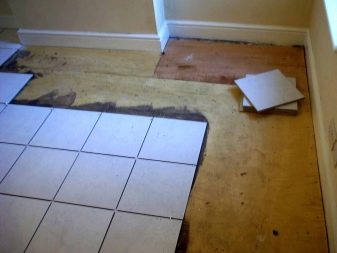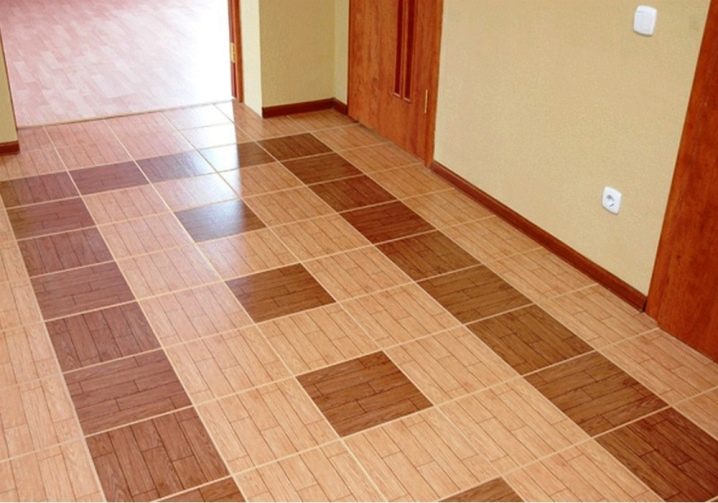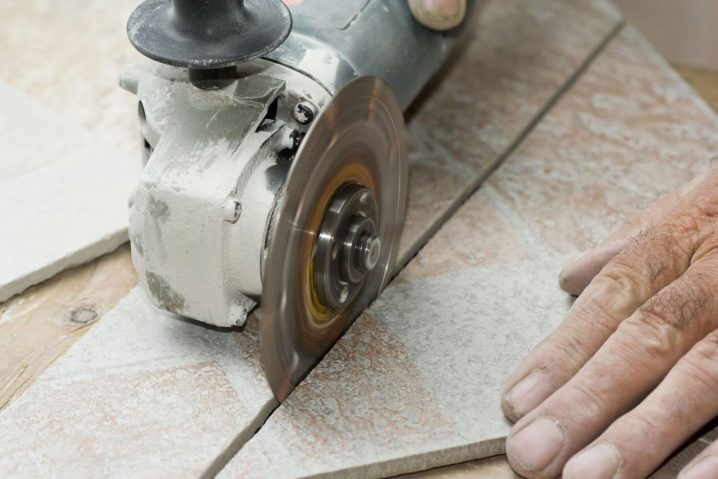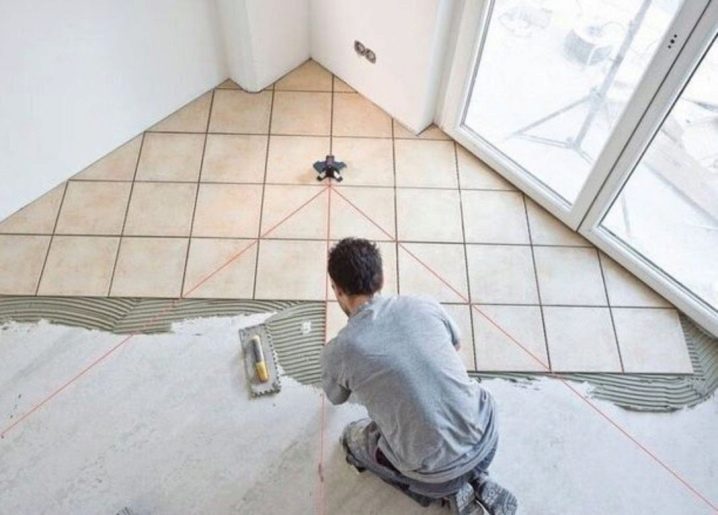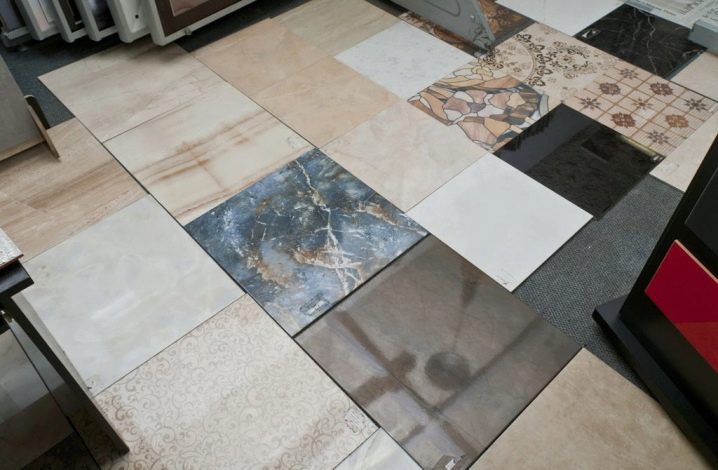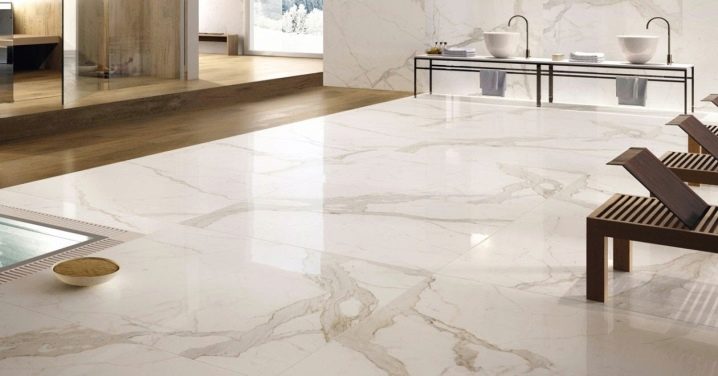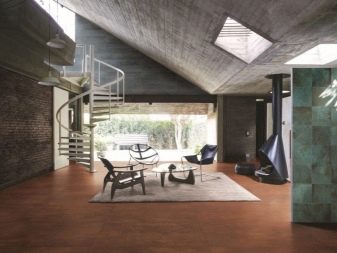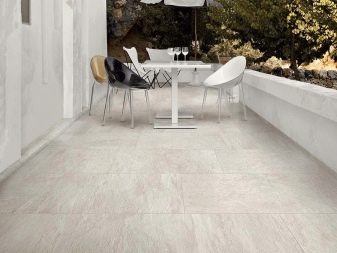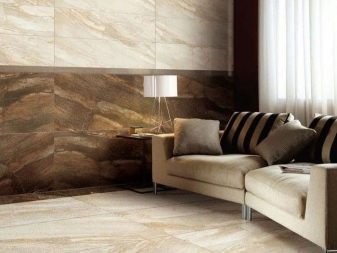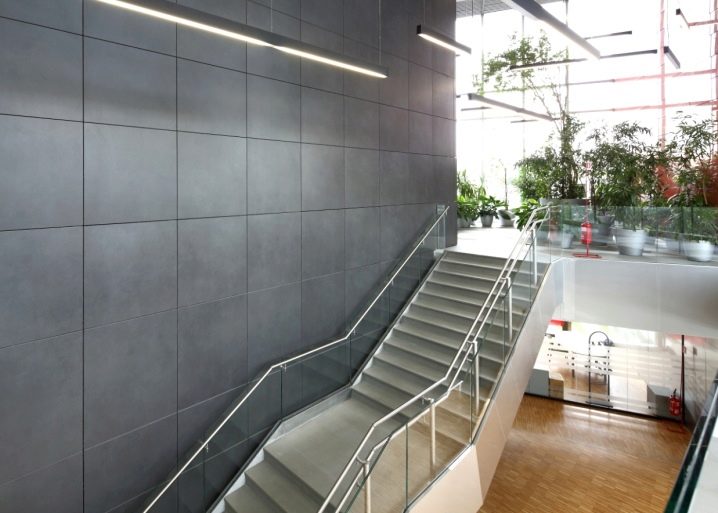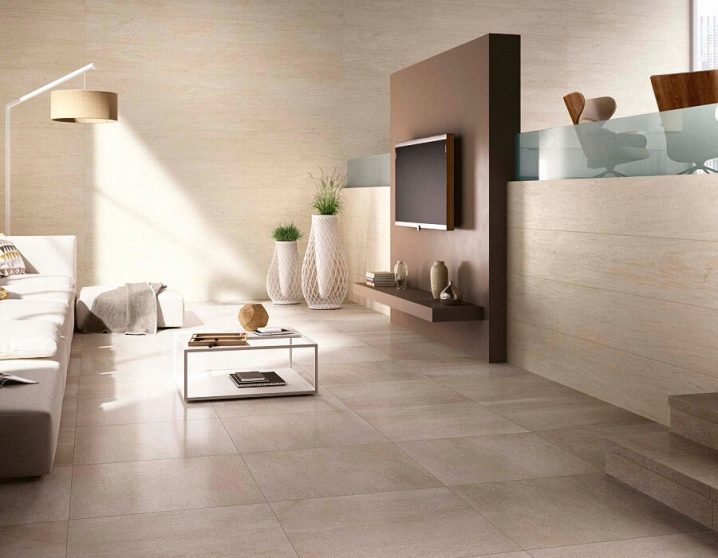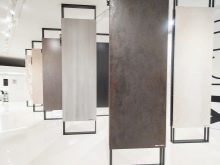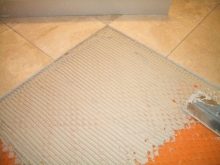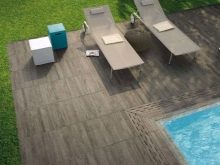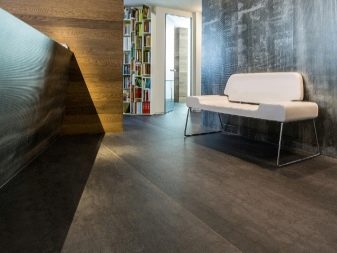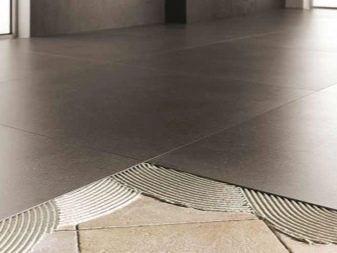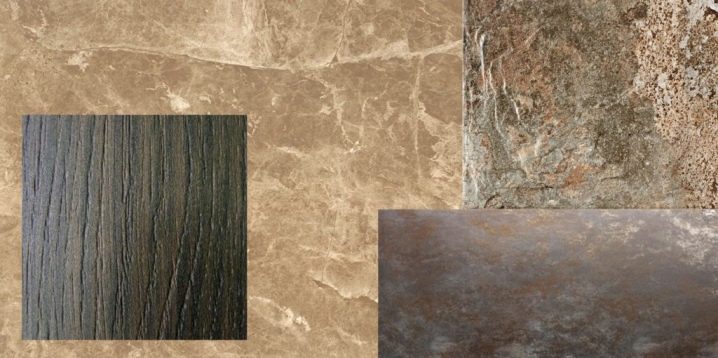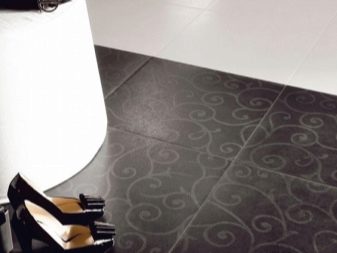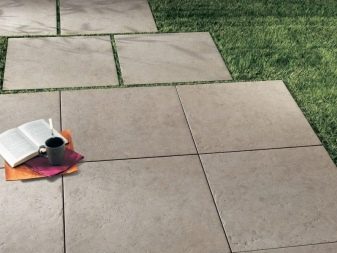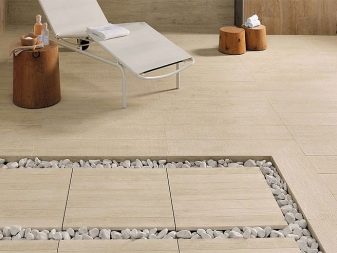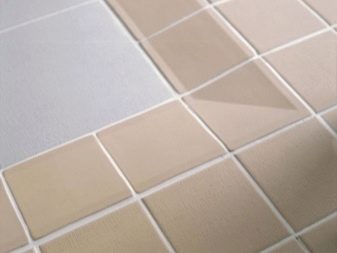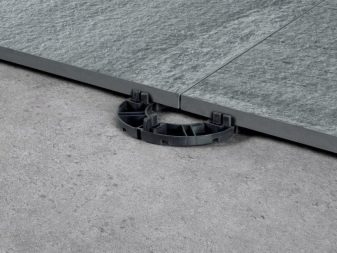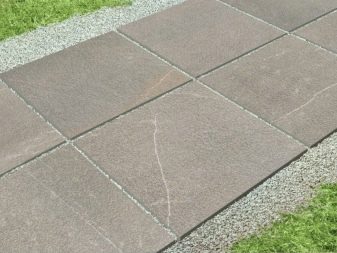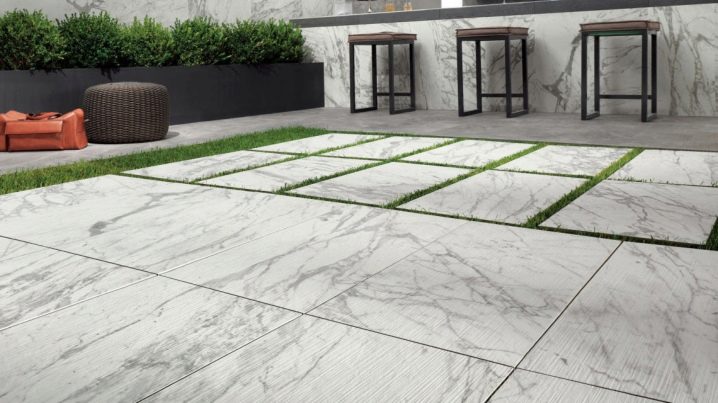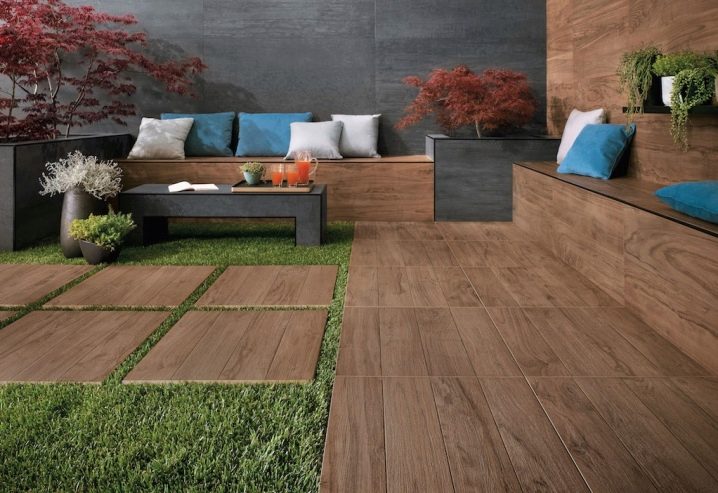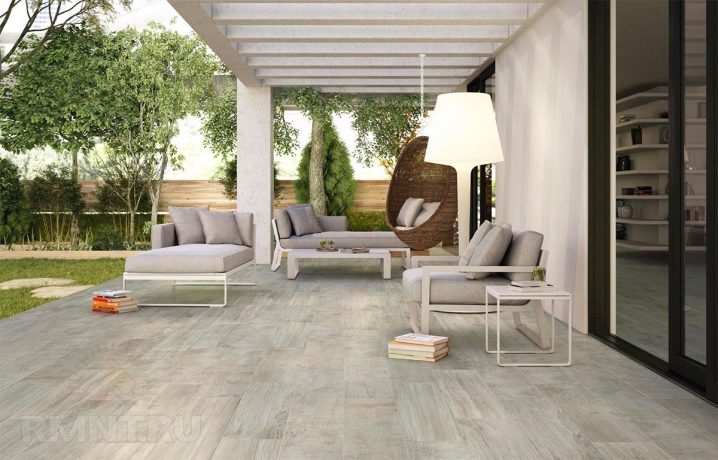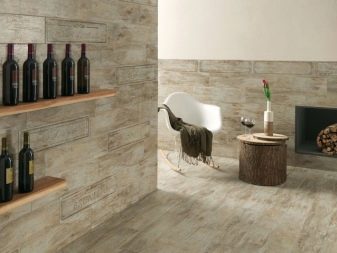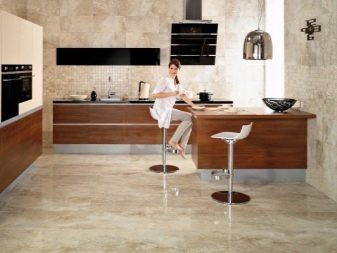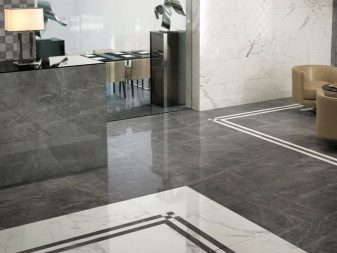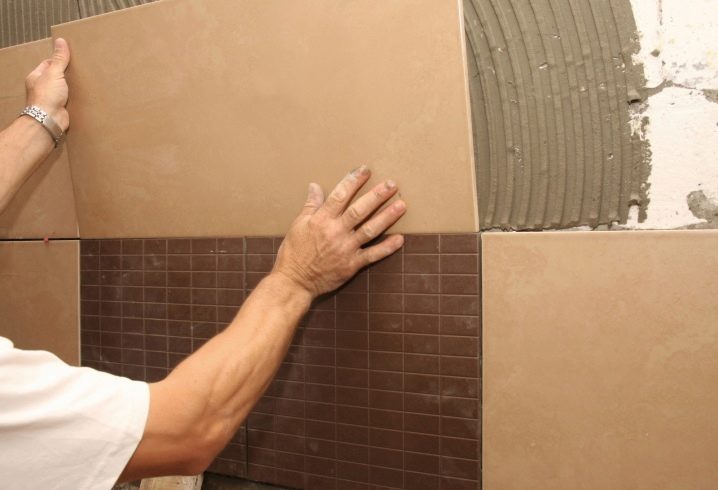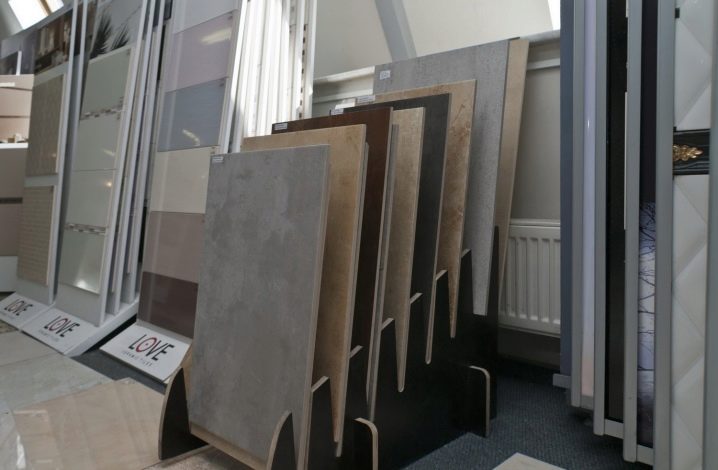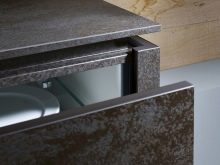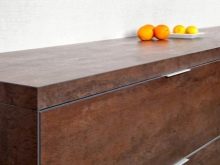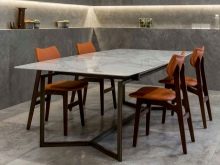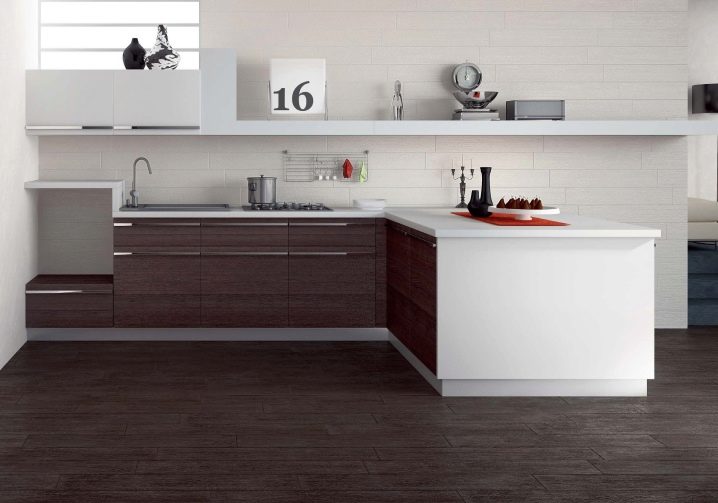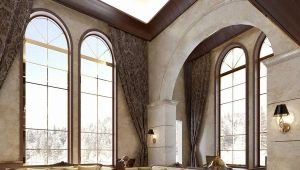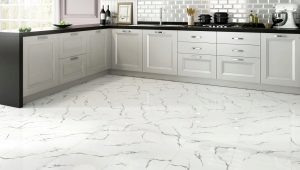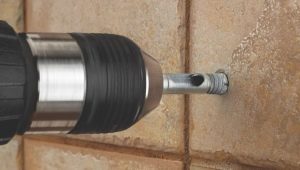Porcelain stoneware thickness: how to choose?
Modern manufacturers and designers have created a very durable lining material, the external and qualitative characteristics of which allowed him to act as a coating or decorative element. For the arrangement of apartments, houses and offices is increasingly used granite.
Specifications
This artificial stone is a floor or wall covering obtained by firing at a temperature of +1300 degrees Celsius. At such a high temperature, the base melts, and a material is formed that is very durable in its quality characteristics.
Produce porcelain tiles on certain technologies. Its main parameters are weight, thickness, size and color. On how they will be combined with each other, depends on the life of this material, place of installation (outside or inside buildings), its appearance and life.
For the production of stone using clay, sand and feldspar. It is produced in the form of plates. Finished coatings sometimes differ in color among themselves, so getting completely identical shades can be difficult. Manufacturers are trying to form sets, carefully selecting the plates are very close to each other in color characteristics.
An important point for buyers is the choice of the right color solution for laying the floor or wall covering with such material. You can use it as a wall covering pools, terraces, facades of buildings.
Water absorption of porcelain stoneware is rather low and amounts to 1%. Therefore, the cold resistance of a stone is high and laying it on the street or in an unheated room can be very effective.
Suitable material to cover the stairs, always carrying high weight loads. Its wear resistance is very high and in the process of long-term use the stone does not lose its original appearance. The material is not subject to deformation, its service life is up to 100 years. It is fire-resistant, does not crumble, it is easy to wash it in the process of operation, at that it is possible to use any chemical compositions.
It is impossible to warm such material. This is the main drawback. Since in most cases the surface is polished to a high gloss, it is not recommended to put ceramic granite plates in the bathroom - the floor will become very slippery if water gets on it.
In this case, it is better to use matte material (without gloss) for styling.
In an ecological sense, porcelain is completely safe, because it is made of natural stone. The weight of porcelain stoneware can vary depending on the size and thickness. Before work should consider this factor. There is no pore in the structure of the stone, so it is very dense.
Porcelain tile is divided into the following categories:
- technical;
- glazed;
- polished;
- matte;
- semi-polished;
- satinated;
- rectified;
- structured.
Technical material is similar to natural stone (granite), resistant to wear. At cost significantly lower than other species.
Glazed stone is obtained by applying glaze. He has a beautiful appearance, he himself is quite durable, refers to the expensive materials. Before the firing process, an additional layer is applied to it.
Apply to decorate the grounds of public and private elite buildings. However, it is not very practical: surfaces can wear off over time.
Polished porcelain tiles look like a mirror (polished) slab. Receive it, having processed a basis of a stone with abrasive components.
Laying such porcelain stoneware is not recommended on the floor, since the sliding force increases several times.
Matte material is the cheapest, is not subject to processing, but only grinding the front side of coarse-grained circles. Therefore, the outer surface does not shine.
A semi-polished stone is produced from a matte version, cutting off its surface and then polishing.
Satin is a material for decorative decoration. Before firing it is applied to mineral salts. It has a shiny front surface. According to its quality characteristics it refers to weak materials (in comparison with other types of stone), it does not withstand heavy loads.
Structured stone is produced by applying gold leaf or etching. The thickness of the plates are 10 and 11 mm. They look very nice on the floor, creating the impression of a parquet, fabric or leather covering.The surface does not slip.
The rectified material is used as monolithic coatings: they can successfully close the seams and joints.
The basis for laying porcelain stoneware should be completely smooth. It is unacceptable the presence of elements of old paint, gypsum or residues of various solutions (cement, lime).
For laying use a special glue that allows you to firmly fix the material on the surface. The method and methods of installation depend on the size of the material.
Dimensions: advantages and disadvantages
Let out porcelain tile of different width and thickness. Often manufacturers practice the manufacture of several sizes of plates, for example, 15x60, 20x60, 30x60 or 15x15, 45x45 mm.
Work with small materials easier and faster. Small rooms are enlarged visually when a small format is laid in them.
From a huge size, you can make a smaller tile sample using waterjet cutting. Carry it with diamond tools using special machines. The size of the protruding edge is called the caliber of porcelain. The parameters of the projections of the tiles may differ from one another.
The problem and disadvantage is the difficulty in selecting porcelain stoneware with the same values. After the firing process, the tile protrusions often become of different caliber (the difference can be from 10 mm to 12 mm). Manufacturers are always closely watching this. Finished products are packed in batches in order to avoid shipment of porcelain stoneware in appearance and size.
Formats 20x120, 120x60, 300x600 mm with a thickness of 2 mm are laid for the most part in rooms where a large weight load is provided (metro, shopping centers, offices). Correction of gravity falling on the plates is governed by their area (size). Installation of such blocks is more difficult to do because of their large weight, however, it is much easier to align the plates after installation, because there are few joints.
A plate of 1000x3000 mm with a thickness of 3 mm to 5 mm is a thin large-format matte porcelain stoneware. It is used for interior coatings in private homes, shops, offices and centers.
The 1200x2400 mm thick ceramic granite, 3 mm thick, is a thin slab with enormous decor possibilities. This material covers the floor and walls inside buildings. Used for laying on the terraces, large loggias of individual housing.
Formats 1200x300, 1200x600, 1200x600 mm is the Ural polished granite.Khaki, quartz, light yellow colors are suitable for coating exterior and interior surfaces. It is laid in commercial and office premises, exhibition halls, restaurants, hotels, railway stations, office buildings, and also in private possessions.
1200x600 mm porcelain tile with a thickness of 20 mm is characterized as a reinforced (thickened) version. Used in combination with stone travertine. Such plates are used for finishing metro stations, stadiums, for covering floors and terraces in large-sized buildings.
Tile 1200x2400 mm with a thickness of 5 mm - porcelain stoneware with a matte surface, made in Italy. Suitable for walls, floors and facades.
The new sample 3000x1000 mm with a thickness of 3 mm to 6 mm is large-format thin plates that can be used for various design projects. It is produced according to the latest technologies with the help of longitudinal pressing, due to which the samples receive incomparable strength characteristics.
The tile with dimensions of 1500x500 mm with a thickness of 3 and 5 mm is Italian sheet porcelain. Such material is made of natural components. Among the features we can distinguish water resistance, frost resistance, as well as resistance to high positive temperatures.The product is not exposed to various solvents, does not fade, for a long time retains its original appearance. Used for laying in large rooms.
The thickness of the plates is of no particular importance for porcelain stoneware coating, since the material is quite durable.
If it is correct to carry out work on the laying of plates, it will not matter what its thickness is: 3 mm or 30 mm. This parameter affects the cost of the material.
There are three categories of plates:
- ultra thin;
- ordinary;
- thick.
Very thin stoneware
Such a plate can be from 4 mm thick and in size up to 500 mm both in width and in length. The material is inexpensive for the price, because its use is rather limited. In most cases, this material is used for residential premises, where the weight loads on the floor are average. For industrial complexes and offices the use of this plate is possible as a final (final) coating.
Put such plates on completely flat surfaces. If during the laying of other categories it is possible to level them out with glue, then in this case such a technique is unacceptable. When cutting superfine and thin material, you need a largeaccuracy, because with any careless movement of the tile immediately burst and will not be suitable for further use.
When the ceramic coating is already on the floor, and there is no need to remove the previous layer, use the method of laying new plates on top of old ones. Since the thickness is insignificant, the new layer will not be able to significantly affect the height of the room, which is an important factor. During the work it is necessary to transfer plates from one place to another carefully.
Normal thickness
This is the most common material. It is intended for laying the floor in residential and office buildings, industrial buildings, concert halls, sports complexes, shopping and government centers.
Its thickness ranges from 8 to 10.5 mm. Plates are 50x50 mm minimum width, and 600x600 mm - their maximum size in this category. The most popular are the dimensions of tiles 30x30, 33x33, 45x45 mm.
Releasing in a large format segment, porcelain stoneware, with the help of cutting, turns from a huge wide block of square shape into a rectangular element with different width or length. For example, from a size of 120x120 mm it is easy to get 20x120 mm.
Most builders are inclined to believe that using medium-sized slabs is the most profitable option.
Ultra thick products
Ceramic granite with a thickness of 11, 12 and 14 mm is considered thick. The thickest ceramic granite reaches 30 mm. Such plates are recommended to put in places with huge weight loads.
As a rule, these are buildings with a large flow of people. Laying plates made on the floor or open areas. Such blocks are quite expensive and need good physical training when working with them, since the weight of each tile is substantial.
The opinion that large plates are not suitable for laying in rooms of medium and small sizes is a thing of the past. A feature of large products is their ability to make the grounds to be coated more refined and rigorous. For example, a floor laid with rectified plates will look like a luxurious ceramic coating. The bases covered with large blocks of porcelain stoneware look beautiful because much less joints are formed when laying.
Among the manufacturers of ceramic granite panels the leading position is occupied by Italian craftsmen, creating masterpieces of coatings that can satisfy the most sophisticated tastes. They have developed and implemented plate formats that are easily combined with materials such as glass and wood. This makes it possible to create fantastic interiors and beautiful furniture products.
The novelty of 2017 was a super-thick porcelain stoneware, made under the aged tree. A floor decorated in such a color scheme gives a feeling of contact with the past.
Plates with an increased thickness of up to 2 cm are well suited for laying outdoors - they are not afraid of temperature changes and during the winter period prevent the formation of ice in areas of stairs and porches.
How to choose?
In recent years, it has become fashionable to use large-format sheet porcelain tiles for laying in bathrooms, hallways, and kitchens.
Before you buy plates for the manufacture of furniture, cover them with a floor or wall, it is best to first calculate their consumption and pay special attention to the thickness of the material and the method of its installation.
First of all, you should decide how often certain rooms are used in the house (where the installation will be carried out).
There are four categories of premises: low, medium, high and intensive maneuverability. Living quarters belong to the middle category. Most people use the kitchen and bathroom most often. therefore, when choosing slabs for the floor, you should consider a number of such features:
- the stone should not be slippery;
- it must be resistant to dirt and moisture;
- porcelain stoneware should be of high strength (so as not to be damaged).
What amount of slabs you will need for work can be understood if you know the surface area (whether it is the wall or the floor) and the method of laying. Diagonal styling, for example, involves a large number of scraps that need to be taken into account when purchasing a material. It is necessary to purchase plates by 10-15% more, since a part will go to waste.
Porcelain tile for the kitchen is sold in large sizes. The color of the tree is almost the same as laminate or regular board. This floor looks very good in combination with coatings in other rooms.
An important point is the weight of the coatings. Large-format slabs measuring 1 square meter can weigh from 10 to 25 kg. Therefore, it is necessary to take into account the architectural possibilities of the buildings where this material will be used. Plates are lighter on the walls, heavy material is recommended for laying on the floor.
Ceramic furniture is more and more popular: worktops in the kitchen, coasters, tables in the bathroom.
Furniture and furniture facades are made of thin ceramic granite,since such surfaces are very convenient to use, for many years they do not lose their external characteristics, do not absorb odors, resist mold, and are not susceptible to mechanical damage and are easy to clean.
What format and thickness to buy porcelain, each buyer will take an independent decision. The main thing is that this artificial stone makes the house cozy and beautiful.
From the video below you can learn how to properly lay ceramic granite on the floor.
